L8 LGN to V1
1/17
There's no tags or description
Looks like no tags are added yet.
Name | Mastery | Learn | Test | Matching | Spaced |
|---|
No study sessions yet.
18 Terms
primary visual cortex
(area V1) processes sensory and visual information
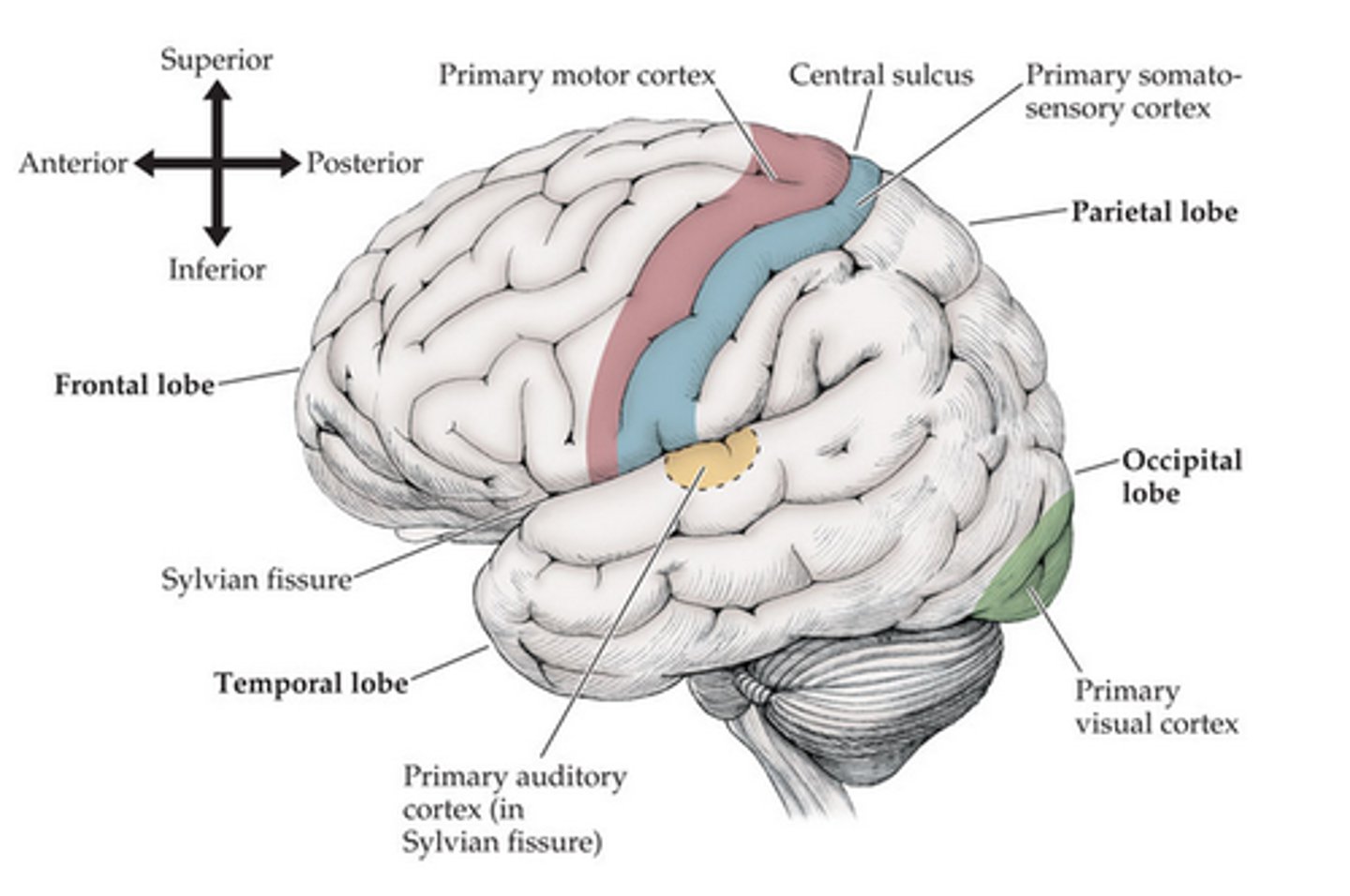
how are V1 cells' receptive fields organized?
Orientation Selectivity: V1 cells have receptive fields that are tuned to specific orientations of edges or lines. This means that they respond maximally to stimuli of a particular angle.
Retinotopic Mapping: The layout of receptive fields in V1 preserves the spatial arrangement of the retina, meaning that adjacent neurons in V1 respond to adjacent areas of the visual field. This organization allows for a detailed representation of visual input.
Columnar Organization: Neurons within a vertical column (or "hypercolumn") in V1 typically respond to the same orientation, while neighboring columns may respond to slightly different orientations. This creates a structured arrangement that allows for the processing of a wide range of orientations in a localized area.
Color and Motion Processing: V1 also contains cells that are responsive to color and motion, further contributing to its complex organization and allowing for the integration of different visual features.
how is V1 organized?
It is organized into columns and slabs
how can we have orientation-selective cells when those cells are getting their inputs from other cells that are not necessarily orientation selective?
Retinal Input: Light information from the retina is transmitted to the LGN. Retinal ganglion cells respond to contrast and light-dark boundaries, sending this information to the LGN.
LGN Processing: The LGN organizes this input and maintains the spatial and temporal characteristics of the visual information but does not perform complex processing like orientation detection.
Projection to V1: The LGN then projects to V1, where the actual processing of orientation occurs. Neurons in V1 receive inputs from multiple LGN cells, integrating their responses.
Orientation Selectivity in V1: In V1, specific neurons become sensitive to particular orientations due to the way they integrate the input from LGN. Some V1 neurons respond strongly to bars or edges at specific angles, a process shaped by the organization of inputs and the connectivity of cortical neurons.
simple cells
Cells in V1 that respond to line, or gradient, oriented in particular direction; well-defined organization of on/off regions
complex cells
Cells in V2 that give best response to moving lines of particular orientation; respond to a stimulus anywhere in the RF -- no clearly defined on-off regions
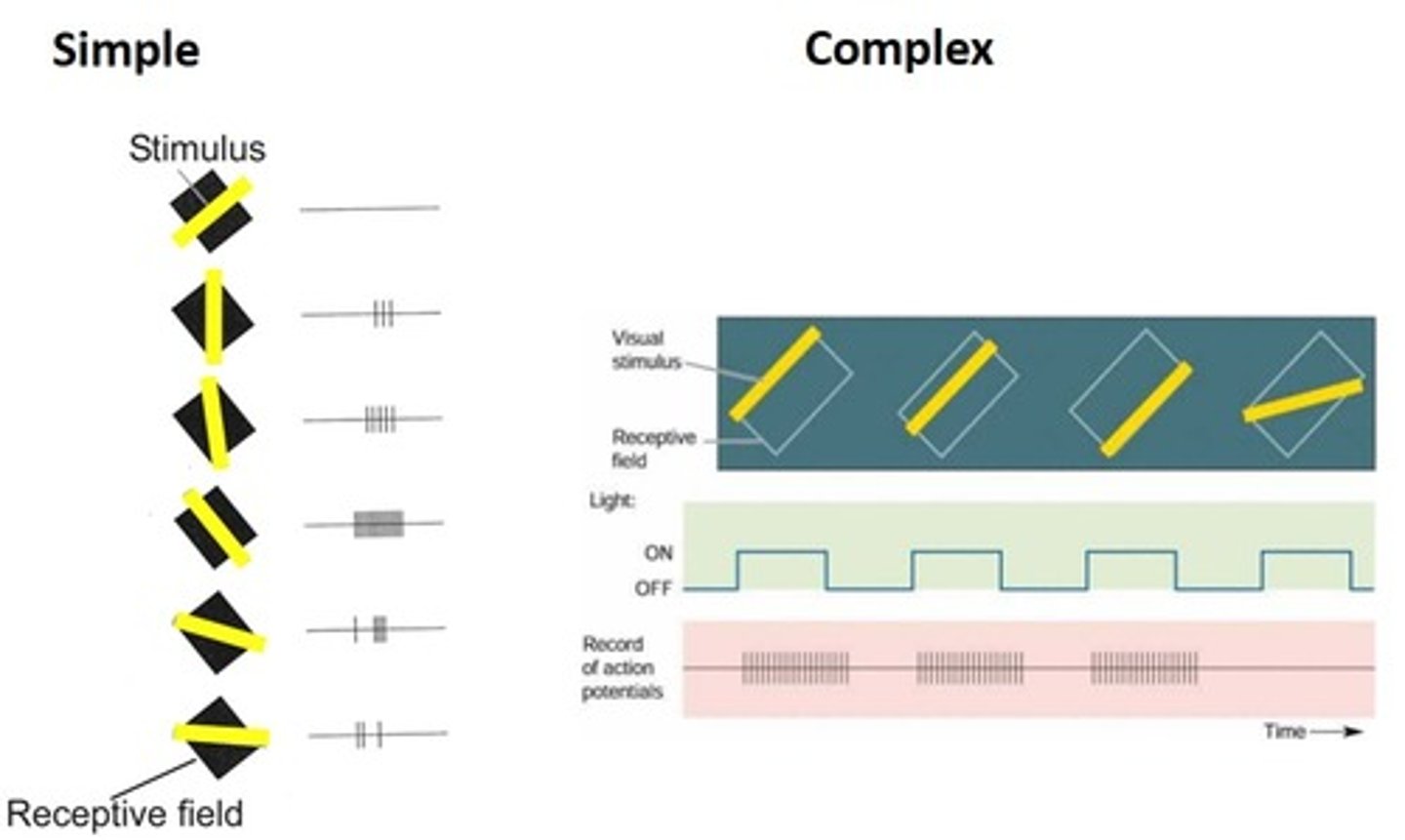
other features that both simple and complex cells respond to
motion direction selectivity and length detector
binocular cells
neurons that respond best to the stimulation of their receptive fields in both eyes simultaneously
color sensitive cells
respond to edges of a particular color
input from LGN
-light-dark boundaries across the visual field
-integrated information from both eyes
-retinotopically organized
cells in V1 are organized so that
-any orientation can be detected anywhere in the visual field
-information from both eyes is integrated
-information is still retinotopically organized
orientation columns
A column in the visual cortex that contains neurons with the same orientation preference.; neurons tuned to the same orientation
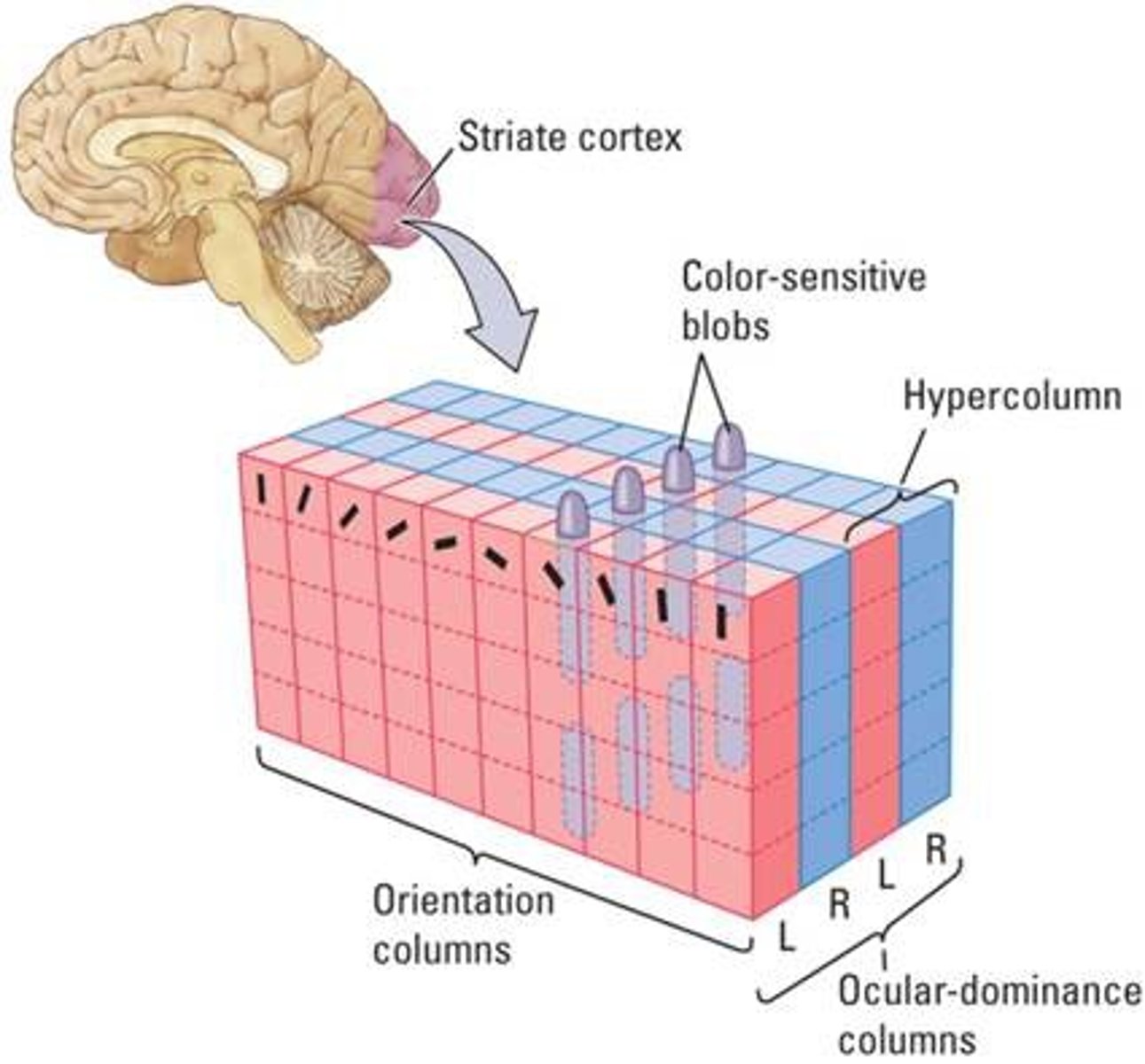
ocular dominance columns
Vertical columns of neurons in V1, all of which respond to stimuli from the same eye.

hypercolumns
consist of pairs of ocular dominance columns, blobs and many orientation columns; covers a range of orientations and dominance
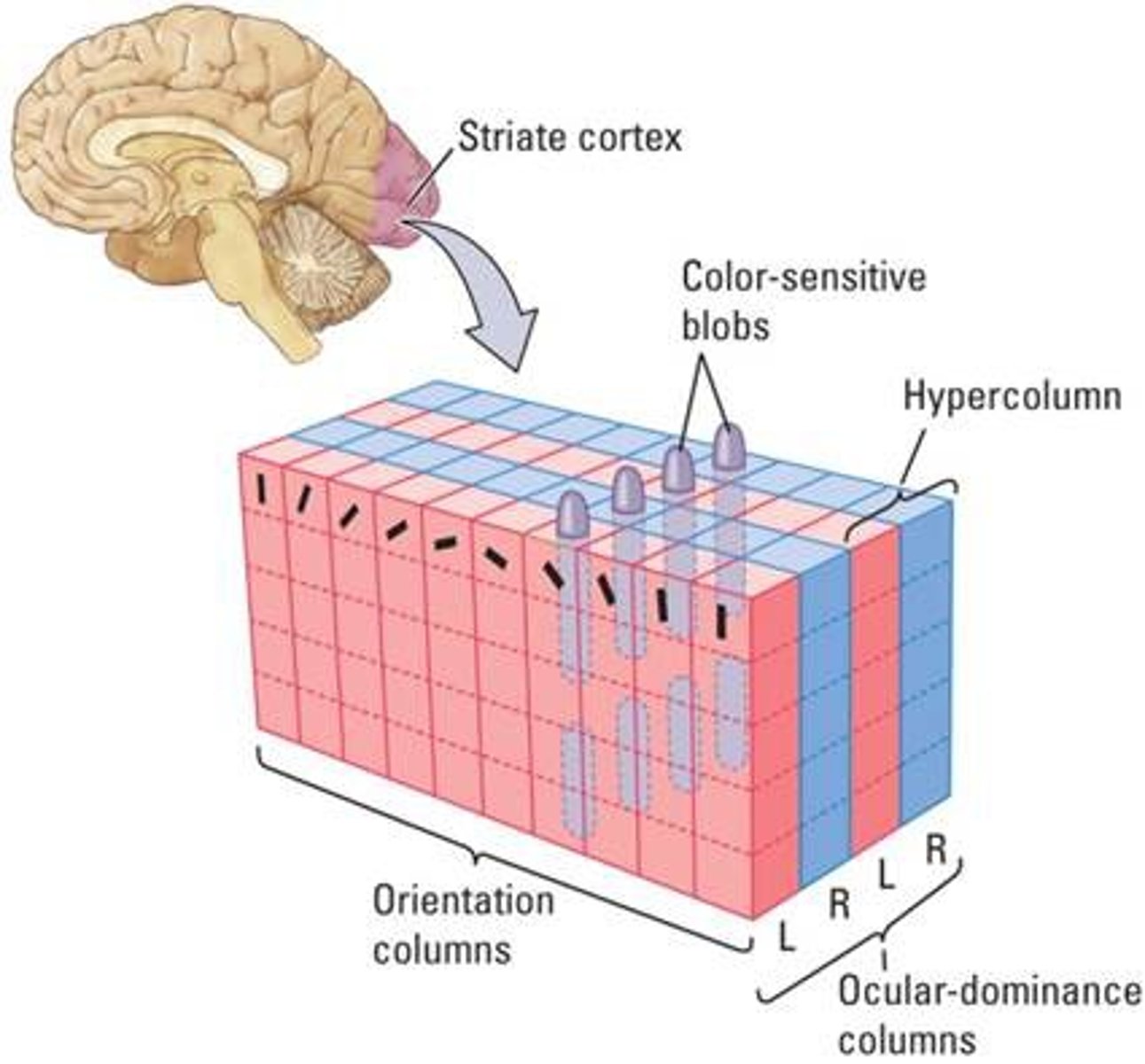
retinotopic mapping
An arrangement of neurons in the visual system whereby signals from retinal ganglion cells with receptive fields that are next to each other on the retina travel to neurons that are next to each other in each visual area of the brain
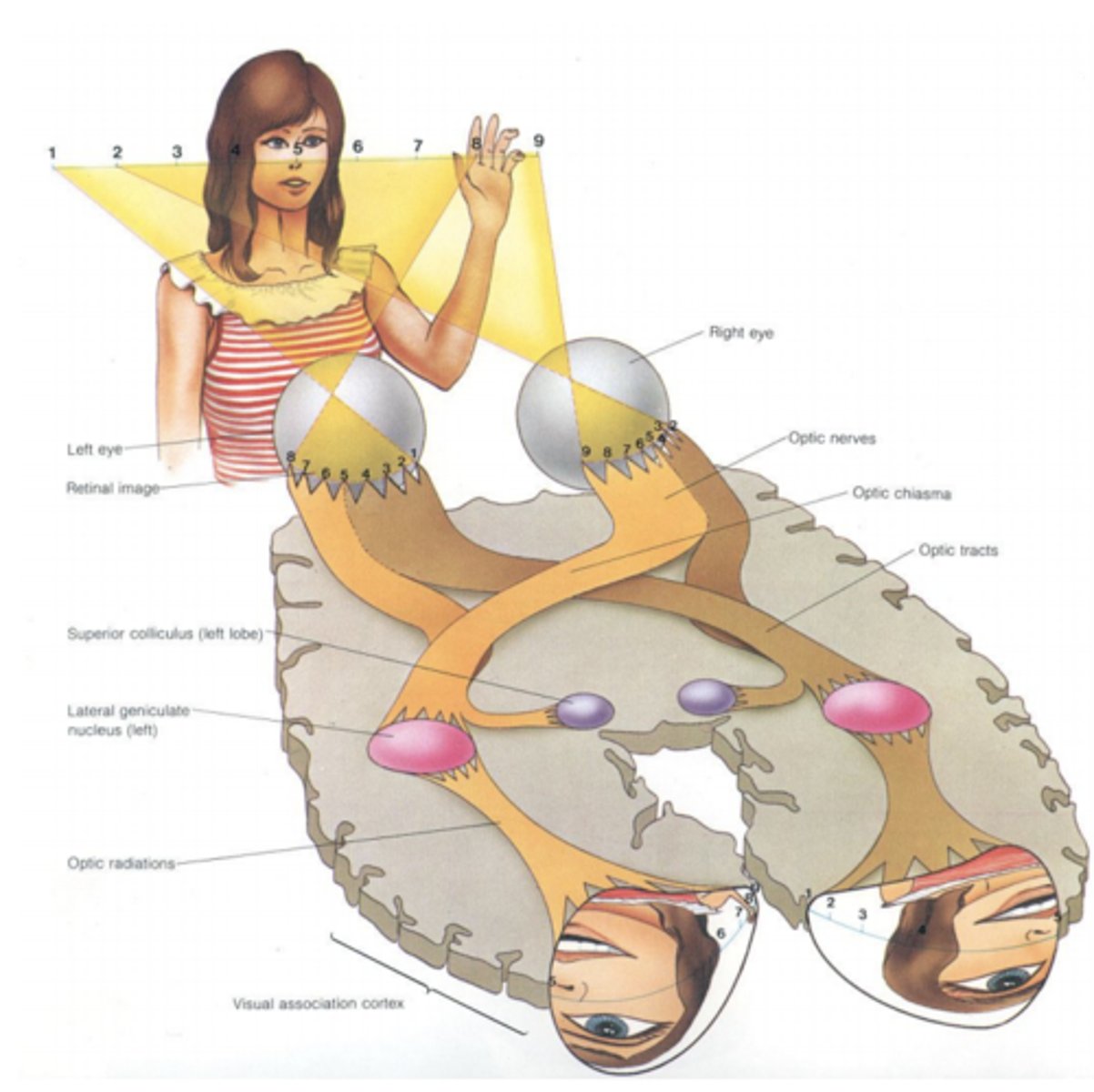
cortical magnification
a larger area of cortex is dedicated to processing a smaller area of the retina; more of V1 process what's happening in the fovea, less of V1 process what's happening in the periphery
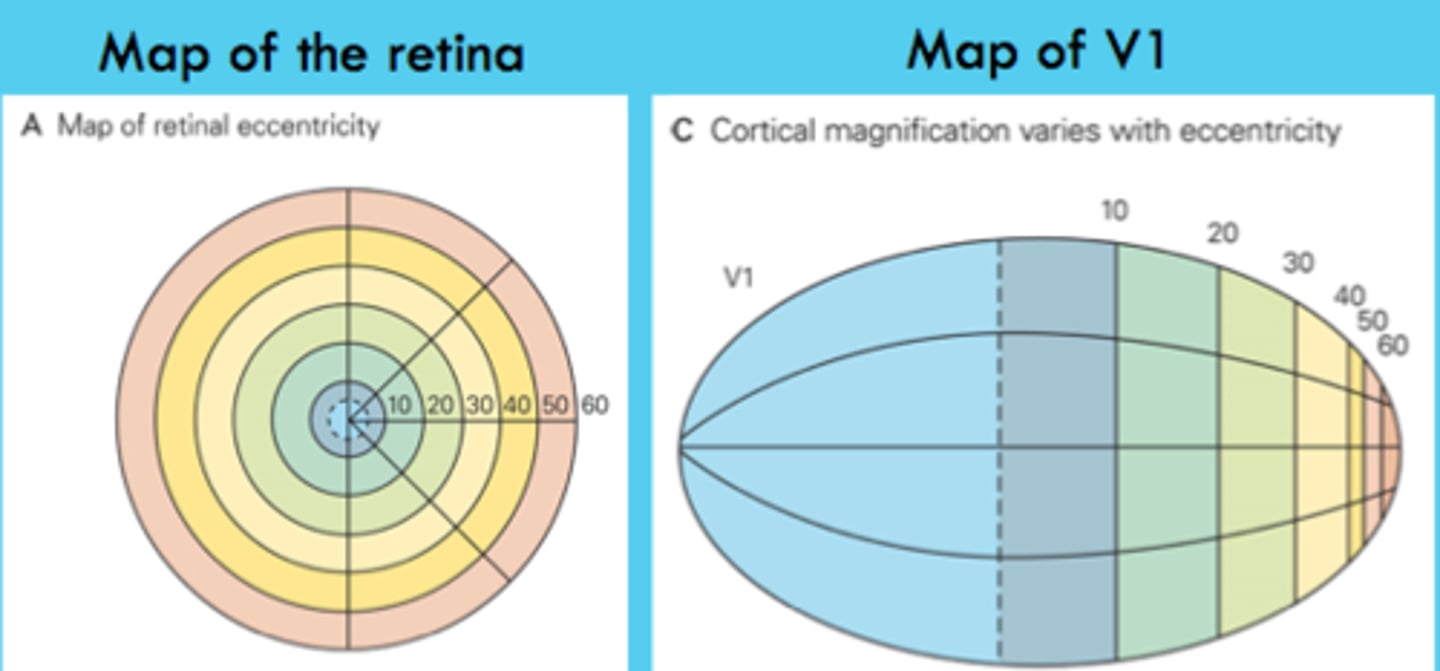
in LGN, we get organization of the incoming visual information:
-light/dark boundaries
-color, motion direction, speed
-information from the 2 eyes
in V1, we get further organization of the incoming visual information:
-edges of a particular orientation, length and width
-color
-motion direction and speed
-depth